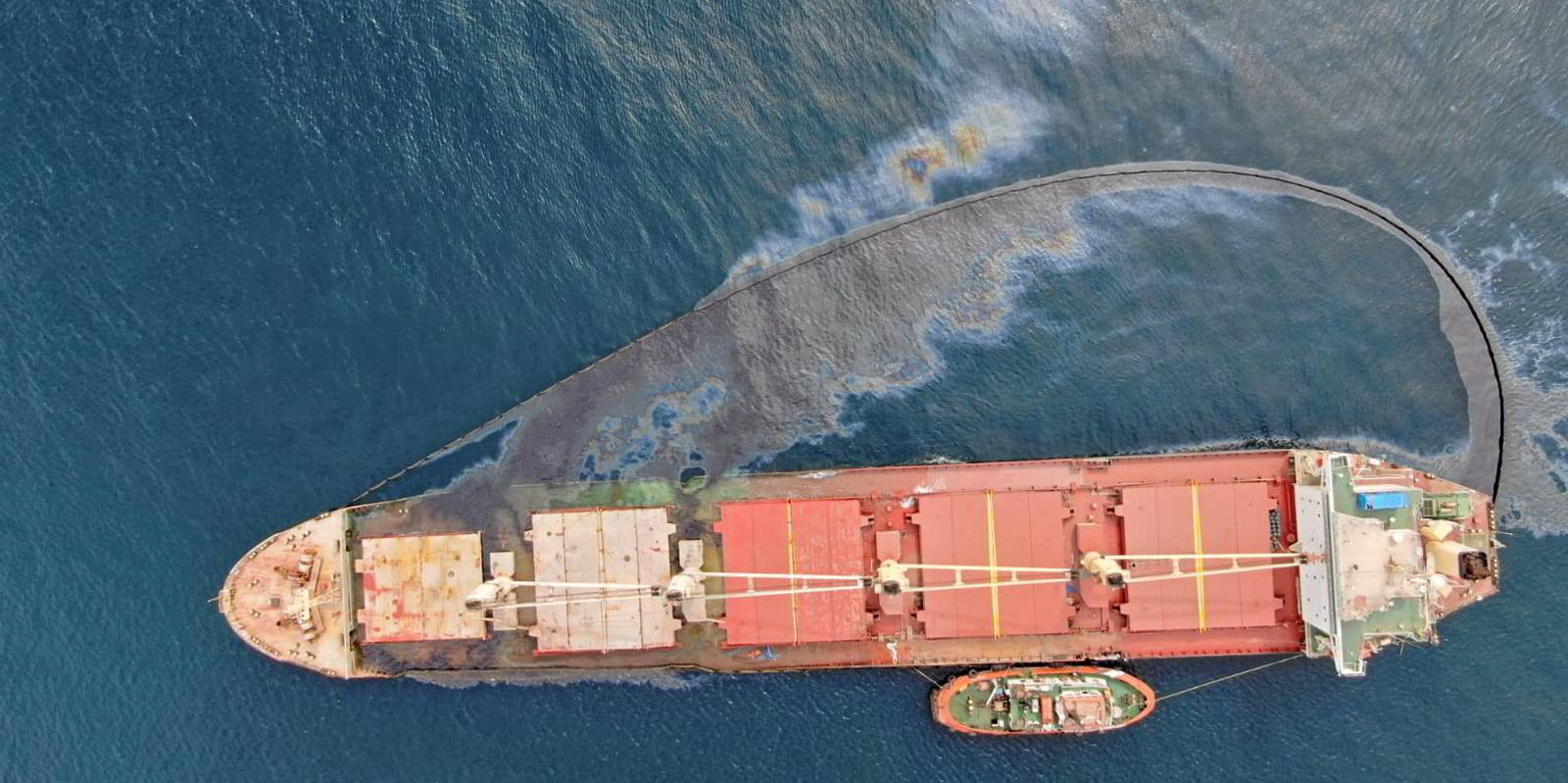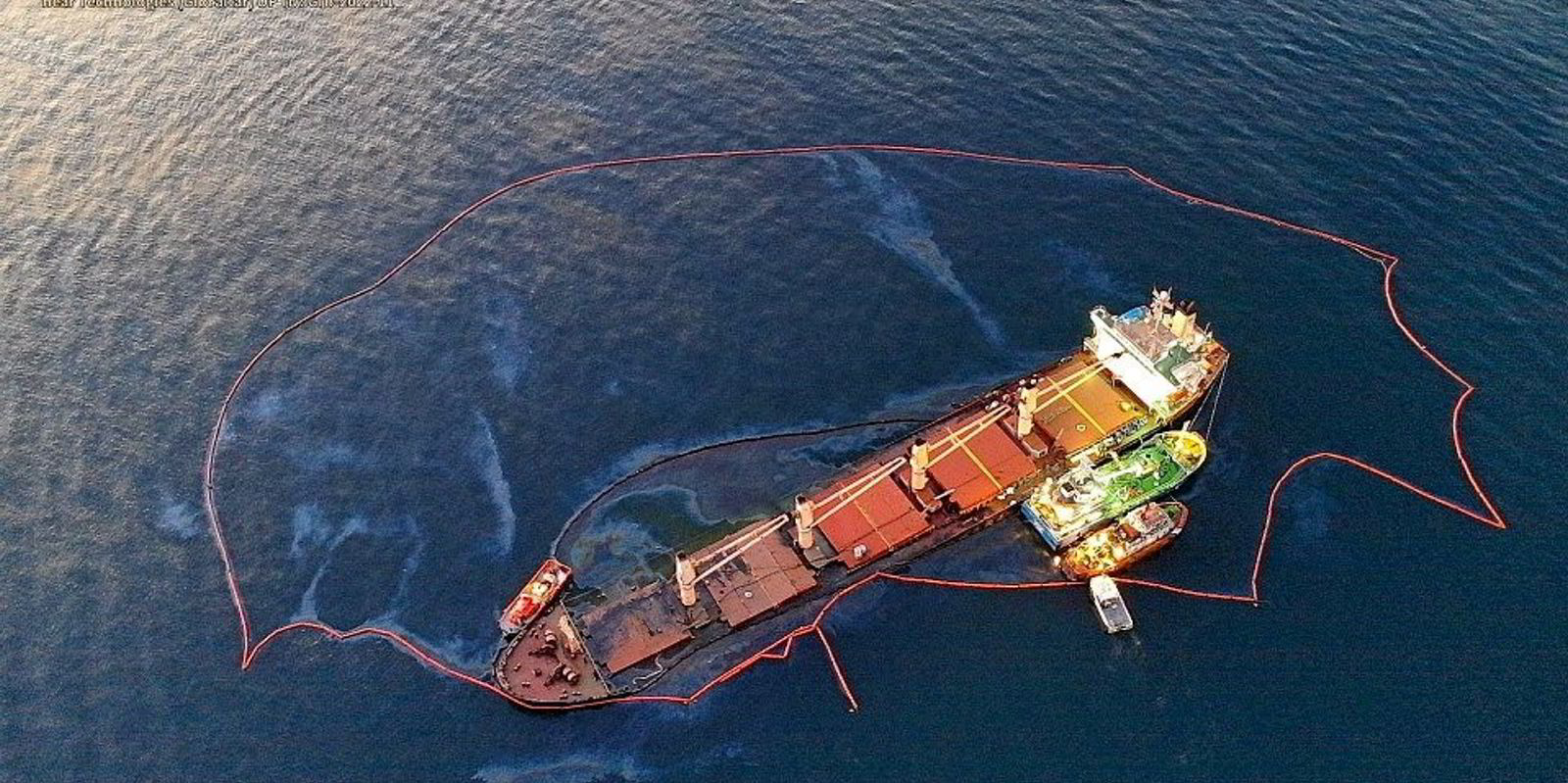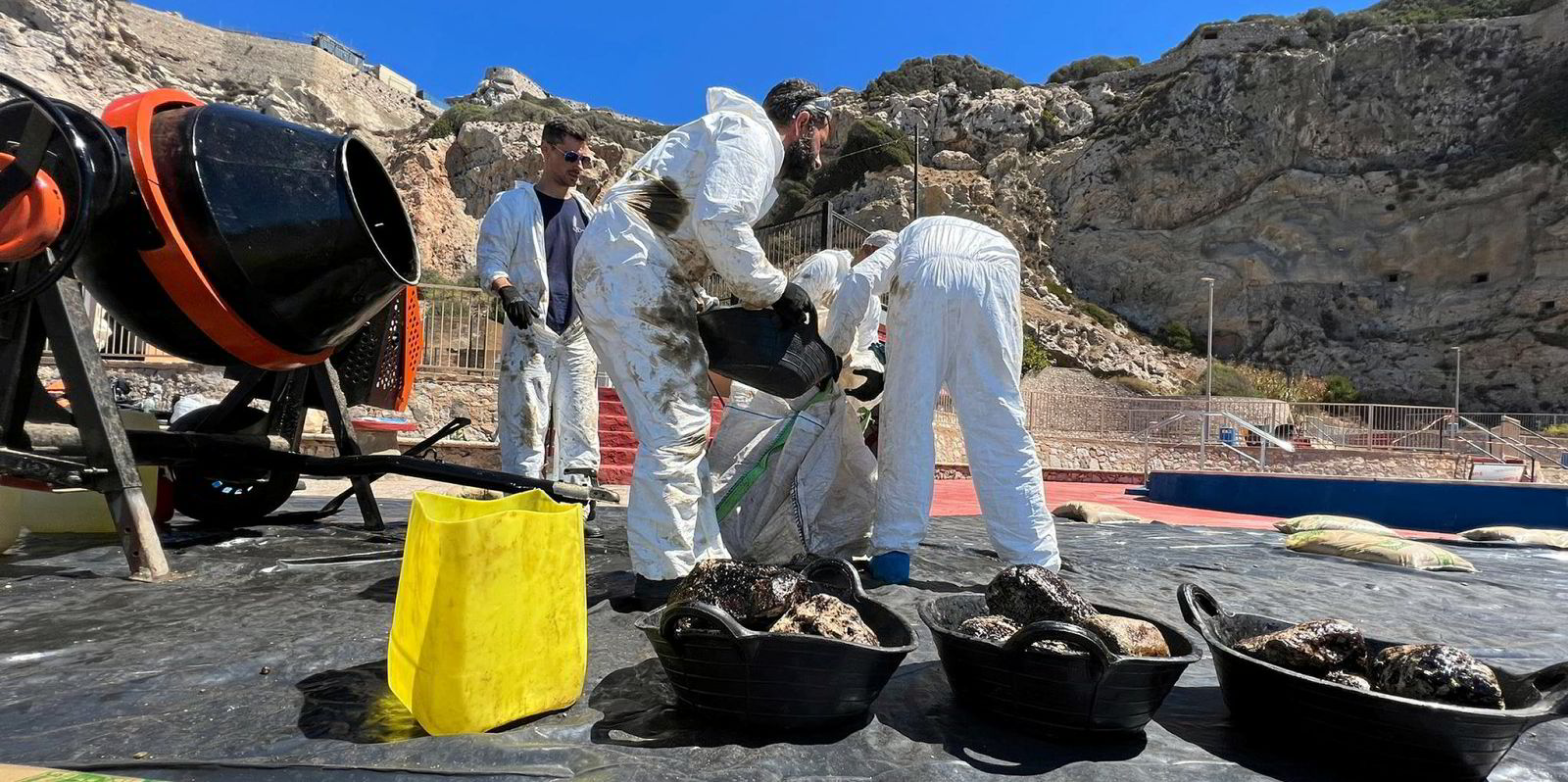The wreck of a bulk carrier aground off Gibraltar for more than three months will be cut in two before being shipped away for recycling.
As earlier reported by TradeWinds Dutch salvage firm and heavy lift specialist Koole Contractors is the approved bidder to remove the wreck of the 35,362-dwt OS 35 (built 1999), once recycling in line with international waste laws is approved.
The wreck removal plans have now been outlined by the Gibraltar Port Authority — which managed the wreck removal tender with technical specialists TMC Marine — to the Gibraltar Chronicle.
The first stage, set to begin before the year’s end, is to remove the ship’s cargo of steel bars.
The second stage is to cut the hull into two sections. The smaller forward section will be loaded onto a heavy lift vessel.
The larger aft section will be towed to an area with sufficient depth to load it onto a semi-submersible heavy lift vessel.
A semi-submersible heavy lift vessel has been used in a wreck removal before. Most notably the wreck of the cruise ship Costa Concordia was towed away by the 275-metre semi-submersible Dockwise Vanguard (built 2012) from the Italian island of Giglio in 2013.
Koole Contractors' own EU-approved recycling yard in Amsterdam has been suggested as a possible destination for the OS 35 wreck.
Potentially hazardous
The plan takes advantage of Koole Contractors expertise in the heavy lift market. Cutting the OS 35 into two large sections appears to be the quickest way of removing it, compared to the potentially hazardous and lengthy process of dismantling it piece by piece.
The Government of Gibraltar is insisting on an early resolution to the wreck removal. It has set an end of May 2023 time limit on QBE, the vessel’s insurer, to complete the wreck removal.
The OS 35 was deliberately grounded after it hit the 165,000-cbm LNG carrier Adam LNG (built 2014) which was at anchor at the time.
The vessel broke its back after grounding leading to pollution fears. However, most of the fuel oil onboard was contained and only a small amount reached Gibraltar’s shores.





